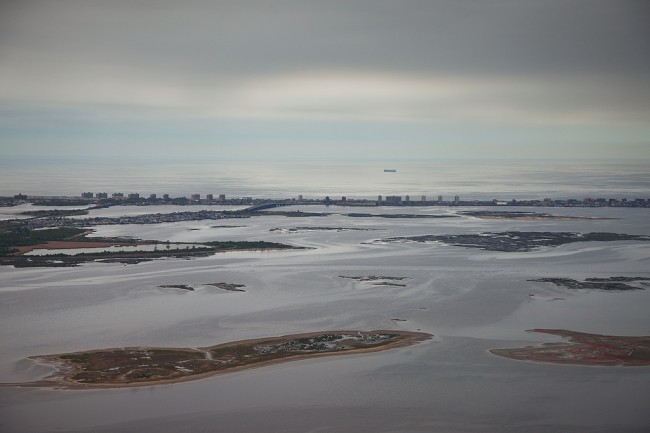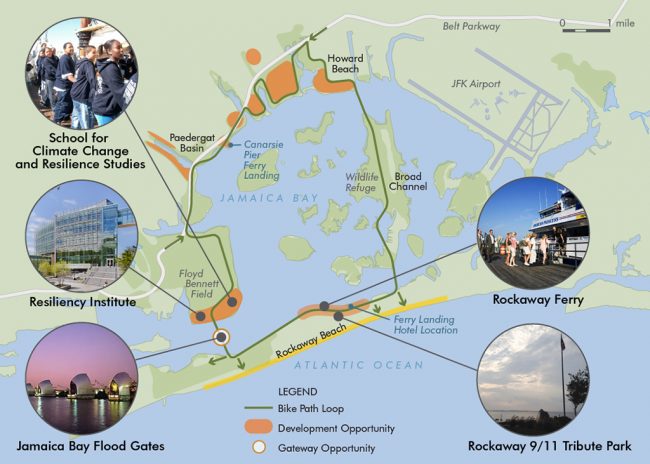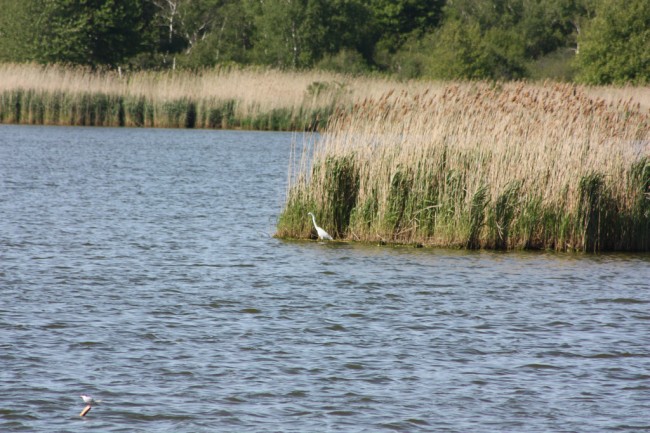
We are celebrating 15 years — and counting — of stories that are deeply researched and deeply felt, that build a historical record of what the city has been.
We are celebrating 15 years — and counting — of stories that are deeply researched and deeply felt, that build a historical record of what the city has been.

Jamaica Bay | Image via Several Seconds
Among the most pressing issues facing New York’s new mayor is how his administration will pick up the mantle of the ambitious agenda established by Michael Bloomberg. How will the de Blasio administration address climate change and increase the resilience of those areas of the city most severely impacted by Superstorm Sandy? In the period since Sandy, there has been an abundance of design ideas and engineering proposals on how best to deal with the new challenges imposed by a changing climate. The Rockaway peninsula, in particular, has been a veritable laboratory for designers exploring the implications of “resilience.” Much of the attention regarding the Rockaways has been on inundation from the Atlantic Ocean, the Rockaways’ precarious existence as a barrier island, and its recent emergence as a haven for hipster beach culture. In fact, however, most of the damage inflicted upon Southern Queens came from Jamaica Bay and not from the ocean side to the south. Following recent coverage on Urban Omnibus of community considerations for post-Sandy rebuilding on the Rockaway peninsula and the uncertain future of its Arverne East section, it seemed like a timely moment to contribute a concept for a new greenway around Jamaica Bay to this ongoing conversation.
Over 800,000 people in more than a dozen different communities in Brooklyn and Queens, ranging from Bayswater to Bergen Beach and Breezy Point to Broad Channel, live along the shores of Jamaica Bay. That’s a greater population than those of Boston or Seattle, two cities whose identities are inextricably intertwined with water. These communities are located in some of the lowest lying — and vulnerable — areas of the city. On the western end of the Bay is JFK International Airport, New York’s most important transportation asset and one of the “US airports most vulnerable to sea level rise.”
In 2012, the NYC Department of Transportation (DOT) was awarded a federal grant to develop an implementation plan for the Jamaica Bay Greenway, a 19-mile pedestrian and bike trail around the western half of Jamaica Bay. The trail, which runs along existing streets through southern Brooklyn; Howard Beach, Queens; the Rockaway peninsula; and Floyd Bennett Field, was first proposed in the 1980s. Aided by leadership from the Regional Plan Association, National Park Service, and the Jamaica Bay Greenway Coalition, the Greenway has proven its potential as a means of generating interest in and increasing recreational contact with the Bay. Using existing roads has given the Greenway a ready base from which to implement the DOT plan.

Ed. Note: This graphic was updated on May 14, 2014. The proposed route and noted sites are unchanged.
But with a few adjustments, the Greenway could also assume a larger, more multivalent role for this part of the city, one that addresses coastal protection and economic development as well as recreation. This alternative route would depart from the course proposed by the DOT by moving the trail out along the edge of the Bay, thereby bringing people closer to the water and offering the promise of a continuous experience along one of New York’s most diverse and varied shorelines. This would mean diverging from Flatbush Avenue to follow the eastern shore of Floyd Bennett Field, continuing along Brooklyn’s southern shore, and bringing the trail out along the edge of Spring Creek Park, rather than proceeding down the center of Howard Beach on Rockaway Boulevard. And instead of running through the middle of the Rockaway peninsula, it would follow its northern edge, between Cross Bay Veterans Memorial Bridge and the Marine Parkway–Gil Hodges Memorial Bridge. This plan creates the possibility of using the Greenway, in places like the northern shore of the Rockaways, as a barrier to protect communities that occupy some of the most precarious locations in New York City. In other parts, such as the area west of Broad Channel, it may actually span the water for brief stretches via the construction of new pedestrian/bicycle bridges.
Unlike many other examples of a regional loop, including Boston’s Emerald Necklace, the starting point for the Jamaica Bay Greenway is not a set of pre-existing nodes in need of connecting. It is, rather, the concept of the Greenway itself that will activate existing, locally recognized resources like Carnarsie Pier and future destinations that can develop along the route over time. The Greenway will help increase mobility for residents who live in the communities along the Bay, for whom present options are limited. It also has great potential as a framework to organize economic development and educational initiatives in the communities along Jamaica Bay. These benefits make the Greenway part of a larger possible strategy for long-term resilience in adjacent communities.
Jamaica Bay, with an area of over 9,000 acres and home to one of the most significant bird sanctuaries on the East Coast, is one of the metropolitan area’s most important natural resources. The area’s importance was recognized in its designation by the federal government as a key pillar of the Gateway National Recreation Area. But the entire park, of which Jamaica Bay comprises a significant portion, receives an average of just 7 million annual visitors and has yet to achieve a larger place in the consciousness of locals and visitors. Its West Coast counterpart, the Golden Gate National Recreation Area, averages 14.5 million annual visitors, and local destinations like Coney Island draw more than 11 million in a single summer. One reason for this disparity is access — much of the Bay is difficult to reach from the surrounding communities. Another may be the Bay’s lack of recognizable destinations.

Jamaica Bay | Image via Peter Roan
The City’s announcement of a new CUNY-led Science and Resilience Institute last summer has for the first time presented the possibility of an institutional anchor along the Bay. Locating the new Institute at the neck of Jamaica Bay could tie it to a major new flood gate protecting the Bay, a proposal among the more ambitious recommendations included in Mayor Bloomberg’s 2013 A Greener, Greater New York report. A major new institution, sited in this prominent location, could also serve as a point of entry or beacon for the Bay. In time, it could become a major attraction, just as the Thames Barrier Information Centre on the south bank of the Thames has become a magnet for tourists in London seeking a glimpse of the barrier. In addition, a new specialized high school dedicated to the study of climate change and its myriad impacts could accompany the Science and Resilience Institute. The school could benefit from its proximity to the Institute as well as its location on Jamaica Bay, much as the New York Harbor School has thrived on Governors Island.
As for new development, there are several potentially attractive sites. The National Park Service’s recent General Management Plan for Gateway identifies several locations to concentrate visitor destinations and development, including Paerdegat Basin. In addition, the area on the north side of the Rockaway peninsula has potential for new restaurants, housing, and a hotel, which could offer splendid sunset views of the Manhattan skyline over the Bay.
Finally, the process of advancing and advocating for the Greenway can help drive community capacity building for all of the communities along Jamaica Bay, including the Rockaways. A healthy and active network of community organizations has proven to be a critical factor for communities that have successfully reemerged after natural disasters. The Rockaway peninsula has been challenged in this respect, affecting the area’s ability to rebound. Building organizational capacity for the communities along the Bay will help them endure and bounce back from future storms.
Sandy showed that improving the resilience of communities and assets along Jamaica Bay is among the most critical long-term challenges facing the city. A more comprehensive vision for the Jamaica Bay Greenway could address this challenge by connecting locals and visitors to existing destinations, tying together public investment with new development, and protecting some of New York’s most vulnerable communities from the long-term effects of climate change.
The views expressed here are those of the authors only and do not reflect the position of The Architectural League of New York.
Comments